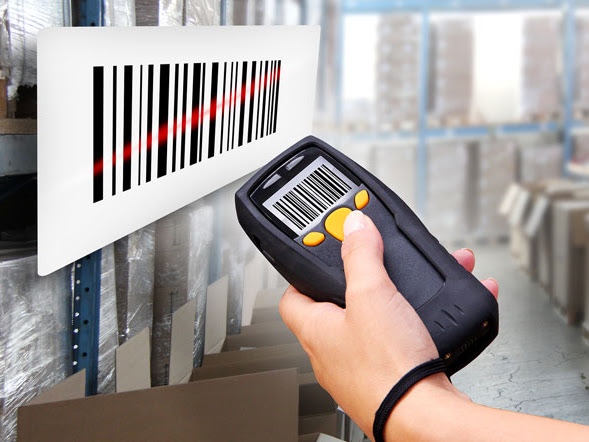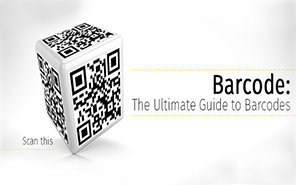A barcode identification is a square or rectangular picture comprising of equal dark lines and a progression of blank areas of different widths. Barcodes store product related data such as production date, expiration date, manufacturer’s name, and product origin and country quantity. There are two types of barcodes which are 1D and 2D (2 dimensional). 2D standardized tags with various shapes like square shapes, hexagons, dabs and so forth are also being used, which is read using mobile devices. Most of us would have shopped at malls, shops and sensible places and at the time of payment at the cash counter you would have noticed that the salesman scanned the price tag of the product you bought and you would have been requested to pay the bill.

However, it took almost two decades for the idea to become commercially viable. After some failed projects that tried to use barcodes, they found compatibility in supermarkets’ check-out counters in the 1970s for scanning products, a role they have been known for ever since.
In 1973, the Uniform Grocery Product Code Council chose a variety of circular barcodes with vertical bars, more than previously patented. Barcode Registration in India formed the basis of the Universal Product Code (UPC). It is a barcode using to track merchandise in stores in most countries of the world. IBM undertook the project of developing the first UPC and in 1974 the first UPC marked item. And it is using in supermarket. A 10 pack of Wiggle’s Juicy Fruit Chewing Gum at Troy, Ohio’s Marsh Supermarket, was Ohio’s first product scanned using this code. The UPC consists of 12 numeric digits that are specifically assign to the trade item. UPC follows the global GS1 specification. This specification is based on international standards.
Working of Barcode Registration

A barcode registration in Chennai is a square or rectangular image with parallel black lines and a series of white spots. The information is encrypt between the length of each shade line and the space between them.
The scanning device uses a laser to “read” the bar code. It scans by scanning it into a unique bar of shade line. The scanner of barcode, reads lines from left to right.
A barcode scanner reads black and white bars that are in pattern that convert information into binary code (0 or 1). The computer only reads information in binary forms and the same is display on the monitor screen.
The “number” compose on the correct side of the “middle watchman” gives data about the kind of item whether it will make of plastic or common things, veggie lover or non-vegan.
In the picture below, if “2” is written instead of 0; it shows that the product is either vegan or non-vegan.
The two digits closest to the left bar i.e. 0 and 5 indicate if the product will make in the USA or Canada, as the barcode from 00 to 13 is assign for these two countries.
The last digit “7” to one side of the standardized identification is a check number, which guarantees that the data is perused effectively by the reader of barcode.
Types of barcodes
Barcode Registration categorize into two types. They are: 1D barcode and 2D barcode, 2D barcode can contain a lot of data and other information.

2D bar code / 2-dimensional bar code (2-dimensional bar code) is the specific geometry according to a certain law in the plane (two-dimensional direction) distribution of black and white graphics data symbolic information; The use of a number of binary corresponding to the geometric shape of the text, to represent the value of the information through an image input device or a photoelectric scanning device to achieve the concept of “0” and “1” bit stream. Which makes up the internal logic of the computer Automatic data processing: It has some common bar code technology. Each code has its own specific character set; each character has a certain width; has a specific check function and so much more. There is also a separate line of information that automatically identifies the function, and works with graphics rotation change points.
Difference between 1D and 2D
Multi-line barcode, no need to connect to the database, it can store a lot of data, used in: hospitals, driver’s license, material management, cargo transport, while the bar code by a certain loss, can correct the error A bar code that can properly decode two-dimensional code is a multi-line, continuous, variable-length, symbolic identifier that contains a large amount of data. Each barcode has 3 – 90 rows, the beginning of each line, the data part and the ending part. Its character set incorporates each of the 128 characters, the greatest information content is 1850 characters.

A dimensional barcode has only one direction to display information, and no information is express in either direction, its specific height is usually to facilitate the reader’s configuration.
One-dimensional bar code application can improve data entry speed, reduce error rate, but one-dimensional bar code also has some drawbacks:
Data capacity low: 30 characters or more, can only contain letters and numbers;
Bar code size is relatively large (use less space);
After the barcode damage, it cannot be read;
A barcode registration in Coimbatore that stores information in two-dimensional space in both horizontal and vertical directions is called a dimensional barcode.
Purpose of Barcode Registration
- Access of the information (business card, map, WIFI password, data)
- Website Jump (go to microblogging, mobile site, website)
- Ad push (user scan, direct browsing business push video, audio ad)
- Mobile Phone Business (User Sweep Code, Mobile Phone Direct Purchase Order)
- Anti-counterfeit trace (user scan code, you can see the product site; at the same time can get background end usage)
- Promotional options (user sweep, download electronic coupons, draw)
- Member Management (user phone for receiving electronic membership information, VIP service)
- Mobile Payment
Fees for barcode registration are based on the following
1.The Company turnover
2. The Number of barcodes required and
3. Subscription period
